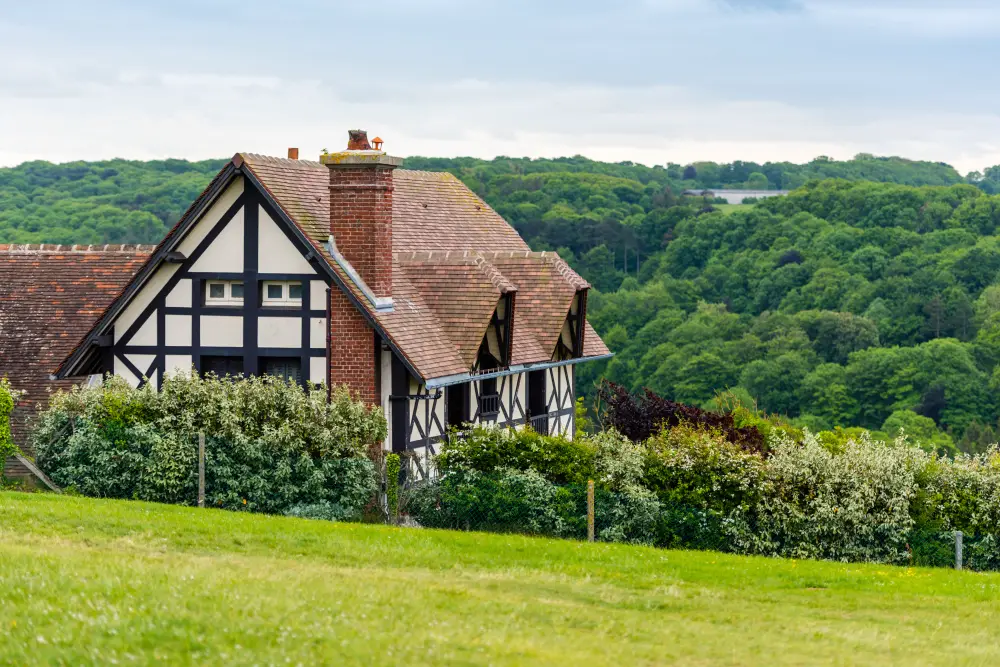Your home’s roof is its first line of defense against the elements, shielding you and your belongings from rain, snow, wind, and sun. Over time, however, even the most well-constructed roofs can begin to deteriorate, leading to potential issues like leaks, water damage, and decreased energy efficiency.
Recognizing the signs that your roof needs attention can save you from more extensive and costly repairs down the line. In this article, we’ll explore six key signals that indicate it might be time for a new roof, helping you protect your home and your investment.
Age and Wear

One of the primary indicators that your roof may need replacing is its age. Most asphalt shingle roofs, for example, have a lifespan of around 20 to 25 years, while other materials like metal or tile can last significantly longer. If your roof is approaching or has exceeded its expected lifespan, it’s crucial to keep a close eye on its condition.
Additionally, visible signs of wear and tear, such as curling or missing shingles, cracked tiles, or granule loss, are strong indicators that your roof may be nearing the end of its serviceable life. Even if your roof appears to be in good condition from the ground, a professional inspection can uncover hidden issues that may necessitate replacement.
Leaks and Water Damage
Leaks are perhaps the most obvious sign that your roof is in need of attention. If you notice water stains on your ceilings or walls, or if you see evidence of water infiltration in your attic, it’s essential to address the issue promptly.
While some leaks may be relatively minor and can be repaired, repeated or widespread leaks often indicate more significant underlying problems with your roof’s integrity. These issues may include damaged flashing, deteriorated underlayment, or compromised structural support.
Ignoring leaks can lead to mold growth, rot, and even structural damage to your home, so it’s crucial to address them as soon as they’re detected.
Sagging or Uneven Roof

A sagging or uneven roofline is a serious red flag that should not be ignored. This issue can indicate structural problems with your roof, such as rotting or weakened rafters, compromised decking, or inadequate support. In some cases, a sagging roof may be the result of excessive weight from snow or ice buildup, which can place undue stress on the structure.
Regardless of the cause, a sagging roof poses significant safety risks and should be addressed immediately by a qualified roofing professional. Ignoring this issue can lead to further structural damage and may even result in a roof collapse in extreme cases.
Visible Exterior Damage
Exterior damage to your roof, such as dents, cracks, or missing pieces, can compromise its ability to effectively protect your home. Damage may be caused by severe weather events like hailstorms or high winds, falling debris, or even wildlife activity.
While minor damage may be repairable, extensive or widespread issues may warrant a full roof replacement. Even if the damage appears to be localized, it’s essential to have a professional inspection, whether by roofers in North Carolina or elsewhere, to assess the extent of the problem and determine the best course of action.
Ignoring exterior damage can lead to further deterioration and increase the risk of water infiltration and other issues over time.
Increased Energy Costs
A poorly functioning roof can have a significant impact on your home’s energy efficiency, leading to higher heating and cooling costs. If you’ve noticed a sudden spike in your energy bills or if your home seems more difficult to heat or cool effectively, your roof may be to blame.
Common culprits include inadequate insulation, poor ventilation, or damage that allows air to escape or enter your home. A new roof with proper insulation and ventilation can help regulate indoor temperatures more efficiently, reducing energy consumption and saving you money in the long run.
If you suspect that your roof may be contributing to higher energy costs, it’s worth consulting with a roofing professional to assess the situation and explore potential solutions.
Mold and Mildew Growth
Excessive moisture from a leaky roof or inadequate ventilation can create the perfect breeding ground for mold and mildew. If you notice musty odors, discolored patches on your walls or ceilings, or visible mold growth in your attic or on your roof’s surface, it’s essential to address the issue promptly.
Mold and mildew not only pose health risks to you and your family but can also cause structural damage to your home over time. In many cases, eliminating mold and preventing its recurrence may require replacing the affected roofing materials and addressing any underlying issues contributing to moisture buildup.
A thorough inspection by a qualified professional can help identify the source of the problem and determine the best course of action to protect your home and your health.
Your home’s roof plays a crucial role in keeping you and your belongings safe and comfortable. By staying vigilant for the signs outlined in this article, you can identify potential issues early and take proactive steps to address them before they escalate into more significant problems.
Whether your roof is showing its age, leaking, sagging, or exhibiting other signs of distress, don’t wait until it’s too late to seek professional assistance.
Recap




